Using KOCOA Military Terrain Analysis for the Assessment of Twentieth Century Battlefield Landscapes
Abstract
:1. Introduction
2. The Application of KOCOA and Its Theoretical Underpinning
2.1. Limitations of KOCOA
2.2. KOCOA and the Pacific Island War
3. Background on Kiska
What Is the Kiska Battlefield?
4. Applying KOCOA to the Kiska Situation
4.1. Phase II (Attack Phase)
Initial U.S. Response: The Kiska Blitz
- Warships in the harbor or en route, as they (a) were the most valuable naval asset to the Japanese and (b) could cause the most damage to Allied operations in the Pacific;
- Transport ships in the harbor, as they (a) carried supplies that had not been landed and (b) could be used to (re-)supply Kiska and other bases if they were allowed to sail;
- Installations and materiel already landed on Kiska.
4.2. KOCOA for Phase III (Occupation Period)
4.2.1. Responding to Airborne Threats
- purely aerial bombardment at low, medium, and high altitude, by long-range land-based bombers, with increasing frequency (under the assumption that additional airfields closer to Kiska may be built in due course);
- attacks by carrier-based dive bombers on land-based targets;
- attacks by carrier-based dive bombers and torpedo planes on shipping in the harbor; and
- attacks by carrier-based fighter aircraft against exposed personnel, equipment and minor installations.
4.2.2. Examining the Threats
4.2.3. Responding to Airborne Attacks
4.2.4. Types of AA Guns
13.2 mm Type 93 Light AA
25 mm Type 96 Twin-Barrelled Medium AA
75 mm Type 88 Heavy AA
120 mm Dual-Purpose Guns
4.2.5. Tactics
4.2.6. Structuring the AA Defenses
5. Hindcasting Command Decisions
5.1. Methodology
5.2. Implications
6. Implications for the Management of the Kiska NHL
Funding
Acknowledgments
Conflicts of Interest
References
- Denfeld, D.C. Field Survey of Truk: World War II Features. In Micronesian Archaeological Survey Report; Historic Preservation Office, Trust Territory of the Pacific Islands: Saipan, MP, USA, 1979. [Google Scholar]
- Denfeld, D.C. Japanese fortifications and other military structures in the Central Pacific. In Micronesian Archaeological Survey Report; Historic Preservation Office, Trust Territory of the Pacific Islands: Saipan, MP, USA, 1981. [Google Scholar]
- Denfeld, D.C. Peleliu revisited. An historical and archaeological survey of World War II sites on Peleliu Island. In Micronesian Archaeological Survey Report; Historic Preservation Office, Trust Territory of the Pacific Islands: Saipan, MP, USA, 1988. [Google Scholar]
- Denfeld, D.C. Japanese fortifications and other military structures in the Central Pacific. In Micronesian Archaeological Survey Report; Historic Preservation Office, Trust Territory of the Pacific Islands: Saipan, MP, USA, 1992. [Google Scholar]
- Adams, W.H.; Ross, R.E.; Krause, E.L. Archaeological Survey of Taroa Island, Maloelap Atoll, Republic of the Marshall Islands; Micronesian Endowment for Historical Preservation: Washington, DC, USA, 1990. [Google Scholar]
- Spennemann, D.H.R. Physical reminders of the British-Japanese Armament Trade in Micronesia. J. Pac. Soc. (Tokyo) 1995, 18, 117–130. [Google Scholar]
- Mushynsky, J.; McKinnon, J.; Camacho, F. The archaeology of World War II karst defences in the Pacific. J. Confl. Archaeol. 2018, 13, 198–222. [Google Scholar] [CrossRef]
- Mushynsky, J. Defining Karst Defenses: Construction and Features. Hist. Archaeol. 2019, 53, 193–204. [Google Scholar] [CrossRef]
- Boyd, D.; Laura, G.; Lon, B. The Archaeology of World War II Japanese Stragglers on the Island of Guam and the Bushido Code. Asian Perspect. 2012, 51, 110–127. [Google Scholar]
- Spennemann, D.H.R. The Last Flight of the “St. Quentin Quail”. Investigations of the Wreckage And History of Consolidated B-24 “Liberator” Aircraft #42-41205 off Jab’u Island, Arno Atoll, Republic of the Marshall Islands; The Johnstone Centre for Parks, Recreation and Heritage, Charles Sturt University: Albury, NSW, Australia, 1994. [Google Scholar]
- McKinnon, J.F.; Carrell, T.L. Saipan WWII Invasion Beaches Underwater Heritage Trail; Report by Ships of Exploration and Discovery Research, Inc.; Corpus Christi. American Battlefield Protection Program: Washington, WA, USA, 2011. [Google Scholar]
- McKinnon, J.F.; Carrell, T.L. Underwater Archaeology of a Pacific Battlefield: The WWII Battle of Saipan; Springer: Berlin, Germany, 2015. [Google Scholar]
- Look, D.W.; Spennemann, D.H.R. For Future Use: A Management Conservation Plan for the World War II Sites in the Republic of the Marshall Islands; The Johnstone Centre of Park, Recreation and Heritage: Albury, NSW, Australia; The U.S. National Park Service Western Regional Office: San Francisco, CA, USA, 1993.
- Look, D.W.; Spennemann, D.H.R. Saving WWII Historic Sites. Metals Conservation Course in the Marshall Islands. Crm Bull. 1993, 16, 22–24. [Google Scholar]
- Look, D.W.; Spennemann, D.H.R. In a tropical marine climate: Conservation Management of Historic Metals. Apt Bull. 1996, 27, 60–68. [Google Scholar] [CrossRef]
- Spennemann, D.H.R. Apocalypse now?—The fate of World War II sites on the Central Pacific Islands. Cult. Resour. Manag. 1992, 15, 15–16, 22. [Google Scholar]
- Spennemann, D.H.R. World War II Remains on Central Pacific Islands: Perceptions of Heritage versus Priorities of Preservation. Pac. Rev. 1992, 5, 278–290. [Google Scholar] [CrossRef]
- McKinnon, J. Community consensus-building and preservation effort on WWII-related caves in Saipan, Northern Mariana Islands. J. Community Archaeol. Herit. 2020, 1–15. [Google Scholar] [CrossRef]
- Spennemann, D.H.R. The Present and Future Management of the Japanese Guns on Kiska I., Aleutians, Alaska. Conservation Management Plan; Study for The US Fish and Wildlife Service, Alaska; Heritage Futures Australia: Shepparton, VIC, Australia, 2008. [Google Scholar]
- Spennemann, D.H.R. The Present and Future Management of the Japanese Guns on Kiska Island, Aleutians, Alaska. The 4.7-inch Battery on North Head, Kiska Island; Documentation and Condition Report. Study prepared for the US Fish and Wildlife Service, Alaska; Heritage Futures Australia: Shepparton, VIC, Australia, 2008. [Google Scholar]
- Spennemann, D.H.R. The Present and Future Management of the Japanese Guns on Kiska Island, Aleutians, Alaska. 120 mm Dual Purpose Gun Battery on North Head, Kiska Island; Documentation and Condition Report. Study for the US Fish and Wildlife Service, Alaska; Heritage Futures Australia: Shepparton, VIC, Australia, 2008. [Google Scholar]
- Spennemann, D.H.R. The Present and Future Management of the Japanese Guns on Kiska Island, Aleutians, Alaska. The 6-Inch Gun Battery on North Head, Kiska Island; Documentation and Condition Report. Study Prepared for the US Fish and Wildlife Service, Alaska; Heritage Futures Australia: Shepparton, VIC, Australia, 2008. [Google Scholar]
- Spennemann, D.H.R. The Present and Future Management of the Japanese Guns on Kiska Island, Aleutians, Alaska. The 6-Inch Gun Battery on Little Kiska Island; Documentation and Condition Report Study for the US Fish and Wildlife Service, Alaska; Heritage Futures Australia: Shepparton, VIC, Australia, 2008. [Google Scholar]
- Spennemann, D.H.R. The Remains of a Japanese Plane at Salmon Lagoon, Kiska Island, Aleutian Chain, Alaska. Identification and Condition Assessment; Report for the US National Park Service and the US Fish and Wildlife Service, Alaska; Institute for Land, Water and Society, Charles Sturt University: Albury, NSW, Australia, 2009. [Google Scholar]
- Spennemann, D.H.R.; Clemens, J. Silent Sentinels. The Japanese Guns of the Kiska WWII Battlefield; US National Park Service Alaska Regional Office: Anchorage, AK, USA, 2014.
- Mobley, C. Cultural Resource Investigations at Kiska, Little Kiska, and Semisopochnoi, Aleutian Islands; Report by Charles M. Mobley & Associates, Anchorage, Alaska, under to Dames & Moore, Anchorage Alaska for the U.S. Army Corps of Engineers, Alaska District; Dames & Moore: Anchorage, AK, USA, 1996. [Google Scholar]
- Tunwell, D.C.; Passmore, D.G.; Harrison, S. Landscape archaeology of World War Two German logistics depots in the forêt domaniale des Andaines, Normandy, France. Int. J. Hist. Archaeol. 2015, 19, 233–261. [Google Scholar] [CrossRef]
- Gaffney, C.; Gater, J.; Saunders, T.; Adcock, J. Day: Geophysical investigation of a World War II German site in Normandy, France. Archaeol. Prospect. 2004, 11, 121–128. [Google Scholar] [CrossRef]
- Carrell, T.; Burns, J.; McKinnon, J.; Krivor, M.; Enright, J.; Roth, M.; Pascoe, K.; Raupp, J.; Arnold, S.; Keusenkothen, M. Peleliu’s Forgotten WWII Battlefield; Ships of Exploration and Discovery Research: Santa Fe, NM, USA, 2020. [Google Scholar]
- Bulgrin, L.E. The tudela site: Fire and steel over saipan, 15 June 1944. J. Confl. Archaeol. 2005, 1, 1–18. [Google Scholar] [CrossRef]
- Spennemann, D.H.R. The Cultural Landscape of the World War II Battlefield of Kiska, Aleutian Islands. Findings of a Cultural Heritage Survey Carried Out in June 2009; Institute for Land, Water and Society, Charles Sturt University: Albury, NSW, Australia, 2011; p. 552. [Google Scholar]
- Spennemann, D.H.R.; Clemens, J.; Kozlowski, J. Scars on the Tundra: The cultural landscape of the Kiska Battlefield, Aleutians. Alsk. Park Sci. 2011, 10, 16–21. [Google Scholar]
- Passmore, D.G. Conflict Archaeology of Tactical Air Power: The Forêt Domaniale de la Londe-Rouvray and the Normandy Campaign of 1944. Int. J. Hist. Archaeol. 2020, 1–33. [Google Scholar] [CrossRef]
- Passmore, D.G.; Capps-Tunwell, D.; Harrison, S. Revisiting the US military ‘Levels of War’Model as a Conceptual Tool in Conflict Archaeology: A Case Study of WW2 Landscapes in Normandy, France. In Fields of Conflict Conference. Proceedings of the 10th Biennial Conference, Ledyard, CT, USA, 26–30 September 2018; Moreira, N., Derderian, M., Bissonnette, A., Eds.; Mashantucket Pequot Museum & Research Center: Ledyard, CT, USA, 2018. [Google Scholar]
- Passmore, D.G.; Harrison, S.; Tunwell, D.C. Second World War conflict archaeology in the forests of north-west Europe. Antiquity 2014, 88, 1275–1290. [Google Scholar] [CrossRef] [Green Version]
- Gassend, J.-L. What Can Be Learned from Shell Fragments? Examples from World War II Battlefields in the Maritime Alps. J. Confl. Archaeol. 2014, 9, 16–32. [Google Scholar] [CrossRef]
- Rass, C.; Lohmeier, J. Transformations: Post-battle processes on the Hürtgenwald battlefield. J. Confl. Archaeol. 2011, 6, 179–199. [Google Scholar] [CrossRef]
- U.S. Marine Corps. Commander’s Tactical Handbook, 30 July 1988. MCRP 3-11.1A; Department of the Washington: Washington, DC, USA, 1988.
- U.S. Marine Corps. Military Operations on Urbanized Terrain (MOUT). 26 April 1998; Department of the Washington: Washington, DC, USA, 1988.
- Bleed, P.; Scott, D.D. Contexts for conflict: Conceptual tools for interpreting archaeological reflections of warfare. J. Confl. Archaeol. 2011, 6, 42–64. [Google Scholar] [CrossRef]
- Scott, D.D.; Fox, R.A.; Connor, M.A.; Harmon, D. Archaeological Perspectives on the Battle of the Little Bighorn; University of Oklahoma Press: Norman, OK, USA, 1989. [Google Scholar]
- Fonzo, S. Key Terrain; Observation and Fields of Fire; Cover and Concealment; Obstacles; and Avenues of Approach and Retreat at the Battle of Buckland Mills 19th October 1863; Fauquier County Administration: Warrenton, VA, USA, 2008.
- Black, B. Gallery Brian Black on the Copse at Gettysburg. Environ. Hist. 2004, 9, 306–310. [Google Scholar] [CrossRef]
- Vicksburg NMP. Vicksburg National Military Park, Vicksburg, Mississippi. Cultural Landscape Report; National Park Service; Southeast Regional Office: Atlanta, GA, USA, 2009.
- Mabelitini, C.B. The Hammock Landing Battery and the Confederate Defenses of the Apalachicola River; University of West Florida: Pensacola, FL, USA, 2012. [Google Scholar]
- Sivilich, E.D.; Sivilich, D.M. Surveying, Statistics, and Spatial Mapping: KOCOA Landscape Analysis of Eighteenth-Century Artillery Placements at Monmouth Battlefield State Park, New Jersey. Hist. Archaeol. 2015, 49, 50–71. [Google Scholar] [CrossRef]
- Brown, C.J. The Battle of Chelsea Creek, May 27–28, 1775: KOCOA Military Terrain Analysis Applied to Heavily Urbanized and Coastal Marine Environments; Boston, Chelsea, and Revere, Massachusetts; University of Massachusetts: Boston, MA, USA, 2012. [Google Scholar]
- Babits, L.E. The Principles of War and the “Battle of the Barges”. In The Archaeology of Engagement: Conflict and Revolution in the United States; Pertermann, D.L., Norton, H.K., Eds.; Texas A&M University Press: College Station, TX, USA, 2015; pp. 74–93. [Google Scholar]
- Babits, L.; Espenshade, C.T.; Lowry, S. Battlefield Analysis: Six Maritime Battles in Maryland, Revolutionary War and War of 1812; Report Submitted to the Maryland Historical Trust and the American Battlefield Preservation Program of the National Park Service; National Park Service: Washington, DC, USA, 2011.
- Stichelbaut, B.; Gheyle, W.; Saey, T.; Van Eetvelde, V.; Van Meirvenne, M.; Note, N.; Van den Berghe, H.; Bourgeois, J. The First World War from above and below. Historical aerial photographs and mine craters in the Ypres Salient. Appl. Geogr. 2016, 66, 64–72. [Google Scholar] [CrossRef]
- Spennemann, D.H.R.; Poynter, C. Using 3-D spatial visualisation to interpret the coverage of Anti -Aircraft Batteries on a World War II Battlefield. Heritage 2019, 2, 151. [Google Scholar] [CrossRef] [Green Version]
- Spennemann, D.H.R. Dead Reckoning: Bombing Kiska through the Clouds. Sabretache 2017, 58, 26–36. [Google Scholar]
- Roth, M.; McKinnon, J.F. “Unidentified Planes Sighted”: The Application of KOCOA Military Terrain Analysis to Aerial Combat. In ACUA Underwater Archaeology Proceedings 2018; Keith, M., Evans, A., Eds.; Advisory Council on Underwater Archaeology: New Orleans, LA, USA, 2018; pp. 181–186. [Google Scholar]
- Sprague, D.L. Defining B-29 Airscapes in the Archaeological Record as a Predictive Model for Site Location; East Carolina University: Greenville, NC, USA, 2018. [Google Scholar]
- Gregory, D. A ‘Baby GDA’: Norwich’s Airspace during the Second World War. Landscapes 2020, 1–19. [Google Scholar] [CrossRef]
- Parshall, J.; Tully, A. Shattered Sword: The Untold Story of the Battle of Midway; Potomac Books: Dulles, VA, USA, 2005. [Google Scholar]
- Spennemann, D.H.R. Hindcasting the Japanese Military Base on Midway Atoll (Central Pacific). J. Confl. Archaeol. 2013, 8, 136–159. [Google Scholar] [CrossRef]
- Cloe, J.H. The Aleutian Warriors: A History of the 11th Air Force and Fleet Air Wing 4; Pictorial Histories Publishing Co.: Missoula, MO, USA, 1990. [Google Scholar]
- HQ AA AC. Japanese AA Defenses of Kiska; AA-2 Section, Headquarters Anti-Aircraft Artillery Command, E.D.C: Fort Trotten, NY, USA, 1944. [Google Scholar]
- CinCPac-CinCPOA. Japanese Anti-Aircraft Materiel. Flak Intelligence Memorandum n° 4; United States Pacific Fleet and Pacific Ocean Areas: Washington, DC, USA, 1945. [Google Scholar]
- OPNAV. Japanese Antiaircraft & Coastal Defense Guns; Air Intelligence Group, Division of Naval Intelligence; Office of the Chief of Naval Operations, Navy Department: Washington, DC, USA, 1945. [Google Scholar]
- News in Japan. 日本ニュース 第107号 [The News In Japan n° 107[昭和17年6月22/22 June 1942]. Newsreel Provided Online by NHK. 1942. Available online: cgi2.nhk.or.jp/shogenarchives/jpnews/ (accessed on 15 May 2020).
- AsahiGraph. 魂軍海リた燦に洋北。中命彈巨ヾーバーハチッダ [Hokuyō ni san tari kaigundamashii. Datchi hābā kyodan meichū] Naval spirit shines in the northern seas. In Proceedings of the Big rounds find their target at Dutch Harbor. アサヒグラフ. 日二十二 月 七 昭和 年 七十. AsahiGraph (Tokyo), Tokyo, Japan, 22 July 1942; pp. 3–5. [Google Scholar]
- Operational Intelligence Division. Aerial Photo Interpretation Report n° 40, Kiska Harbor, Rat Islands, 18 June 1942; Photo Interpretation Section, Operational Intelligence Division, Directorate of Intelligence Section A-2, Headquarters Army Air Forces: San Francisco, CA, USA, 1942. [Google Scholar]
- Fett, R.W.; Englebretson, R.E.; Perryman, D. Forecasters Handbook for the Bering Sea, Aleutian Islands, and Gulf of Alaska; U.S. Naval Research Laboratory: Washington, DC, USA, 1993. [Google Scholar]
- Hailey, F. Pacific Battle Line. The First Two Desperate Years; Macmillan: New York, NY, USA, 1944. [Google Scholar]
- Payne, I.P. The Enemy on Kiska. US Naval Intelligence, Section G-2. AC/G-2]; Advance Command Post, Hdqtrs; Alaska Defense Command; Advance Intelligence Center, North Pacific Area: Adak, AK, USA, 1943. [Google Scholar]
- CinCPac-CinCPOA. Table of Characteristics of Principal Weapons.’ Translation of Captured Japanese document JICPOA item 7164, Captured at Kwajalein Atoll. JICPOA Serial AND-191355, 19 June 1944. Cincpac-Cincpoa Spec. Transl. 1944, 61, 1–12. [Google Scholar]
- CinCPac–CinCPOA. Anti-aircraft defense fortifications. Special Translations No. 62. Cincpac–Cincpoa Bull. 1945, 110–145. [Google Scholar]
- Photographic Interpretation Unit. Map ‘KISKA ISLAND’ Sheet n° 20. Second Edition 28 July 1943. Based on Kiska Map by Corps of Engineers, U.S. Army. Scale 1/25,000, 1943; Photographic Interpretation Unit, Advanced Intelligence Center, North Pacific Force and Photographic Intelligence Section A-2, 11th Air Force: Kodiak, Alaska, 1943. [Google Scholar]
- JICPOA. Gilbert Area Defense Force Order. Gilbert Area Defense Force Secret Order #8. Dated Tarawa (Kiribati) 15 September 1943. Translation of Captured Japanese Document. Captured Tarawa 24 November 1943, Received JICPOA 11 Dec 1943. JICPOA Item 5067; Australian War Memorial: Canberra, Australia, 1943. [Google Scholar]
- JICPOA. Results of the Conference held by the Defense Planning Section. 3rd Special Base Force Secret #131-43. Headquarters 3rd Special Base Force [Tarawa, Kiribati] 16 Aug 1943; Translation of Captured Japanese Document; Captured Tarawa 24 November 1943, Received JICPOA 11 Dec 1943. JICPOA Item 4002; Australian War Memorial: Canberra, Australia, 1943. [Google Scholar]
- Unver, E.; Taylor, A. Virtual stonehenge reconstruction. In Euro-Mediterranean Conference; Springer: Berlin/Heidelberg, Germany, 2012; pp. 449–460. [Google Scholar]
- Gruen, A. Reality-Based Virtual Models in Cultural Heritage. In Archaeologizing Heritage? Springer: Berlin, Germany, 2013; pp. 109–126. [Google Scholar]
- Engel, L. PBY Saga. From the log of a PBY squadron. Air Trails Pict. 1944, 22–23, 62, 64, 68. [Google Scholar]
- Spennemann, D.H.R. Interpreting WWII intelligence data for cultural heritage studies. J. Confl. Archaeol. 2012, 7, 105–132. [Google Scholar] [CrossRef]
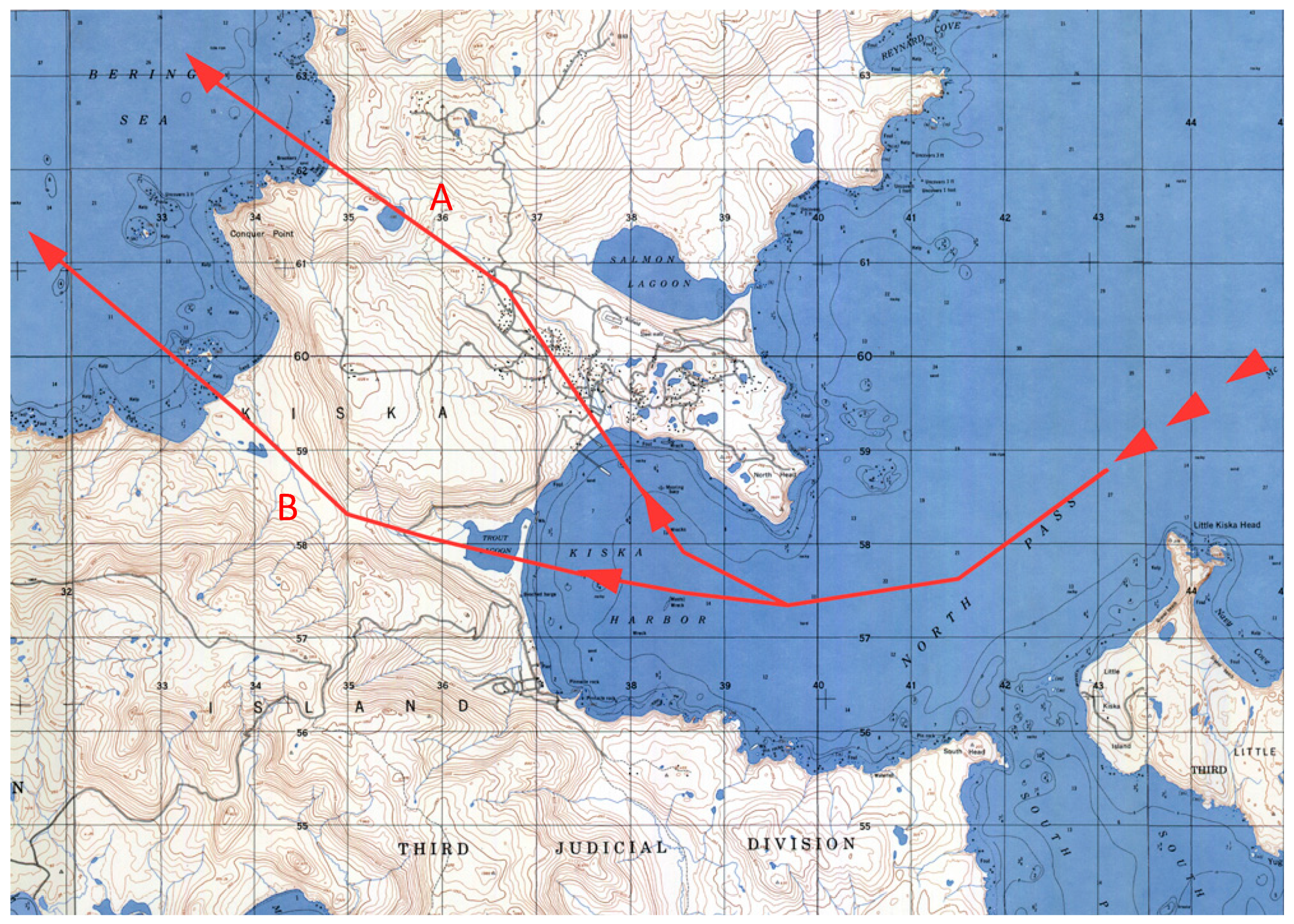
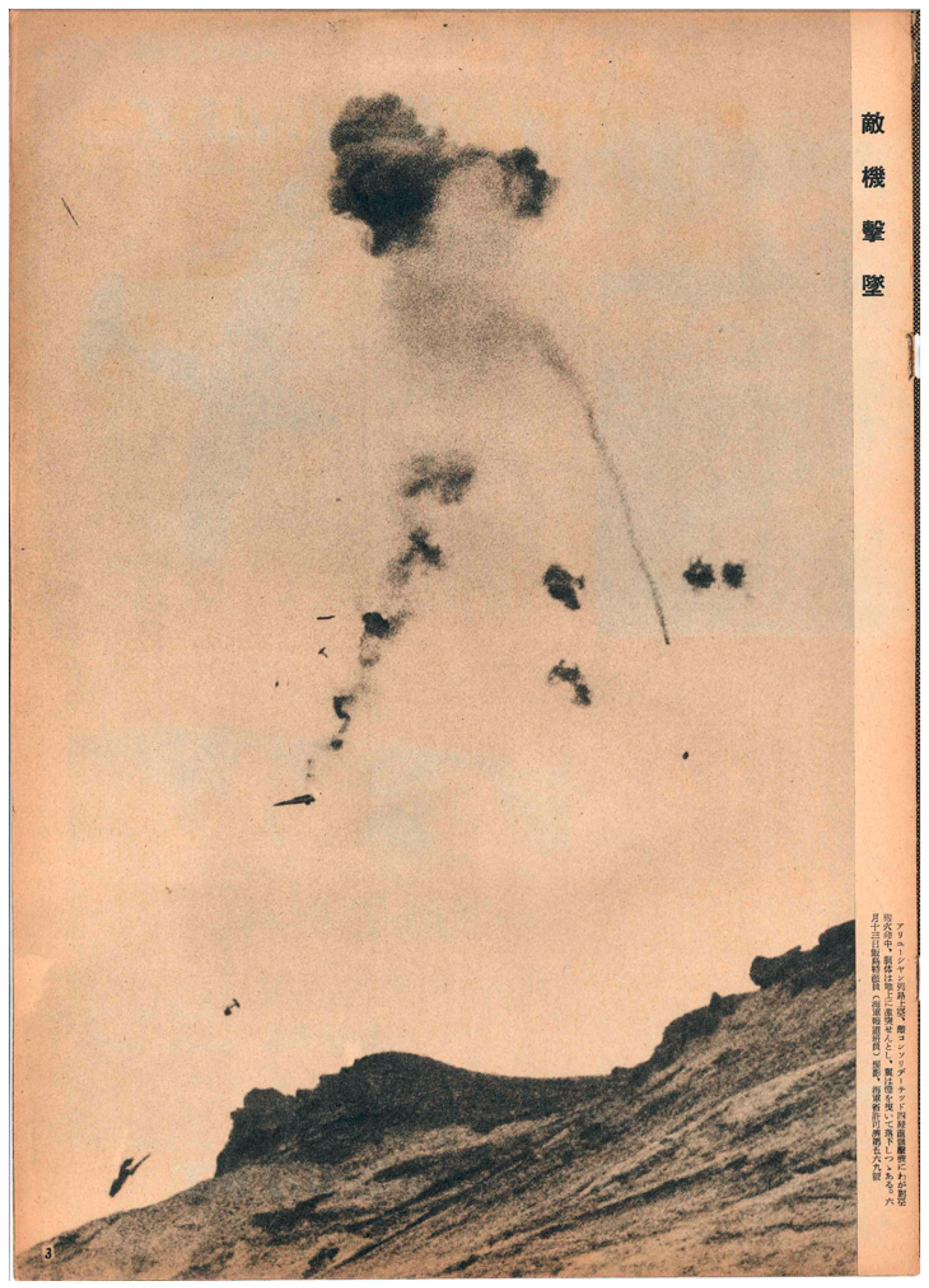
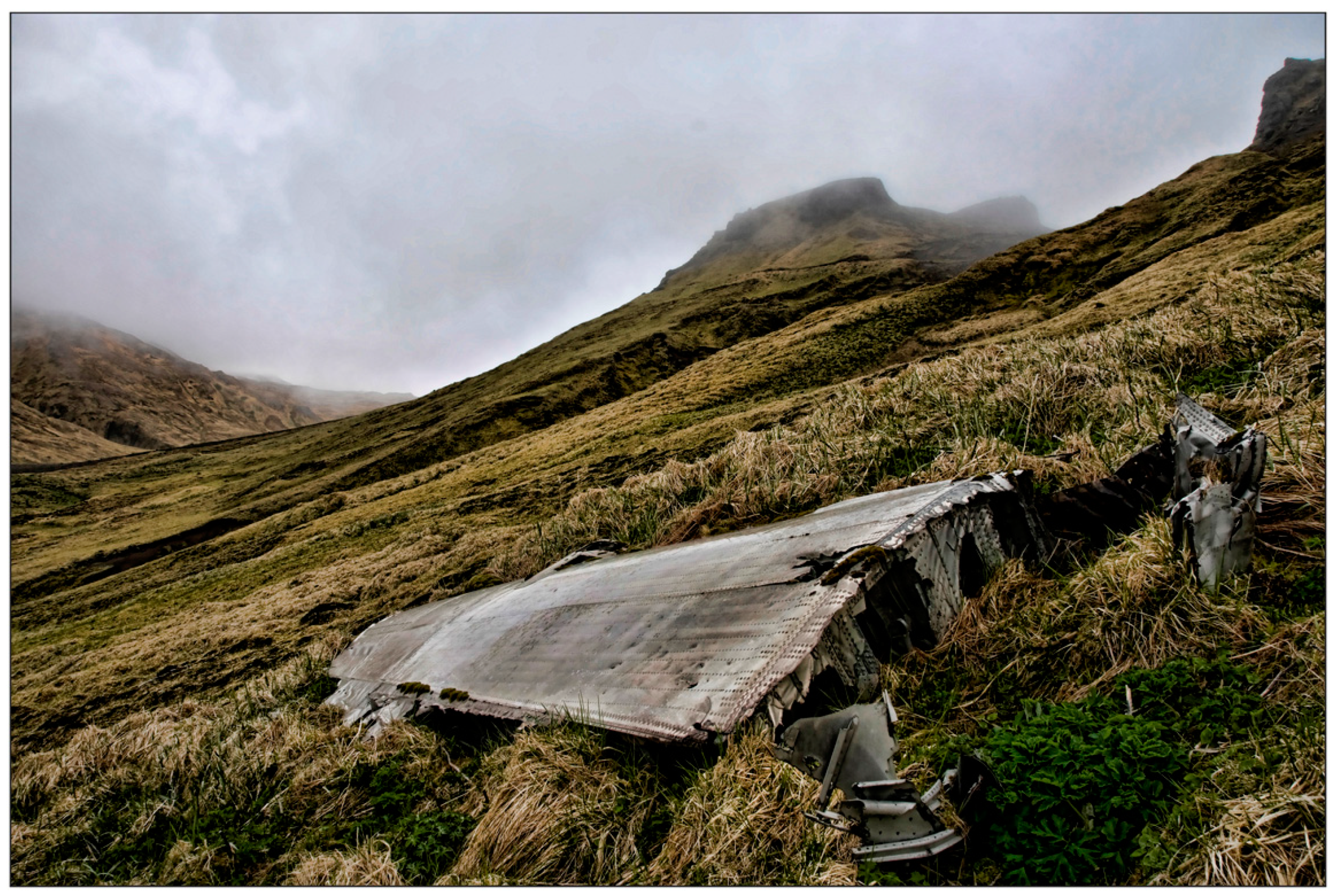
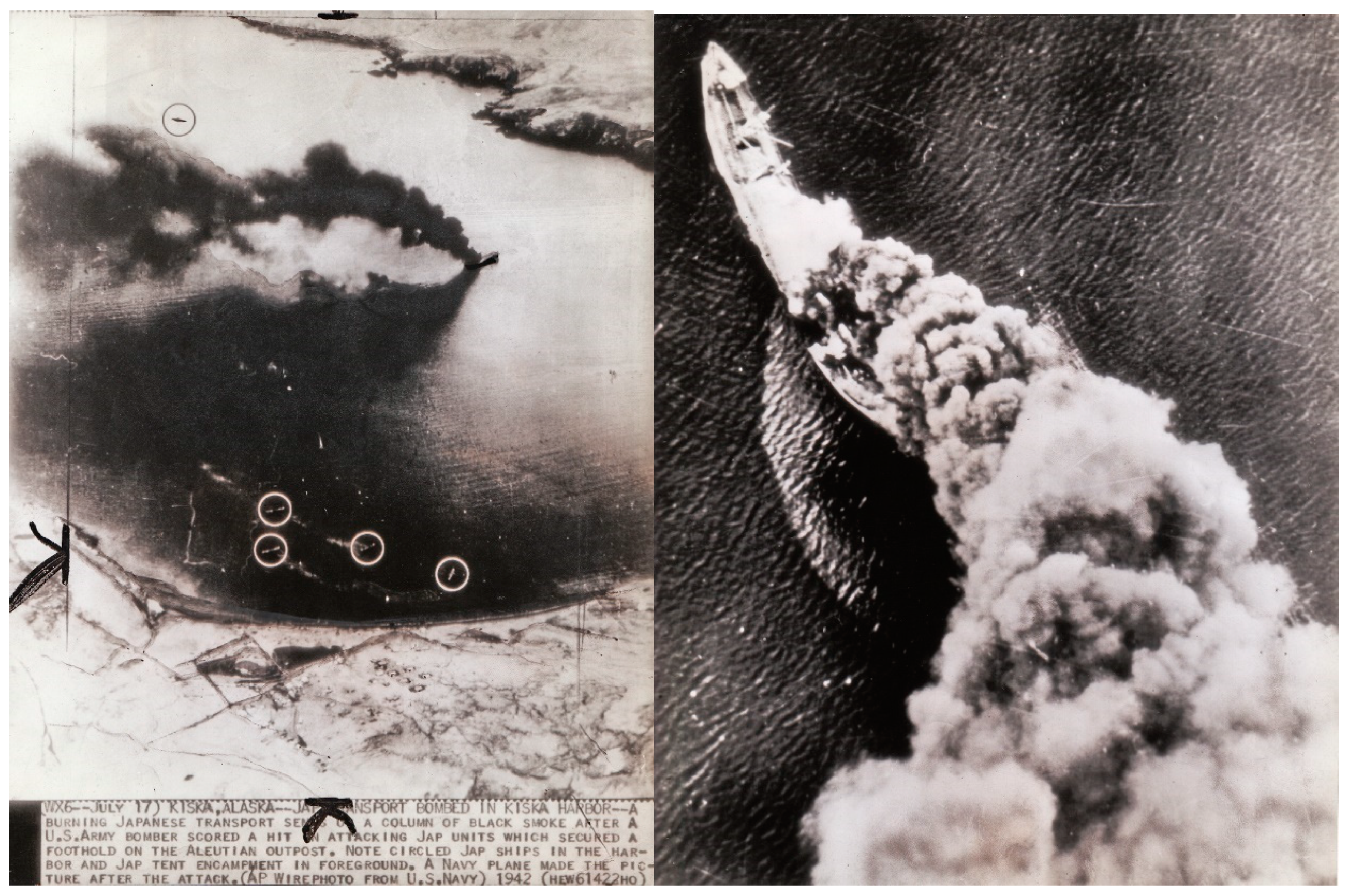


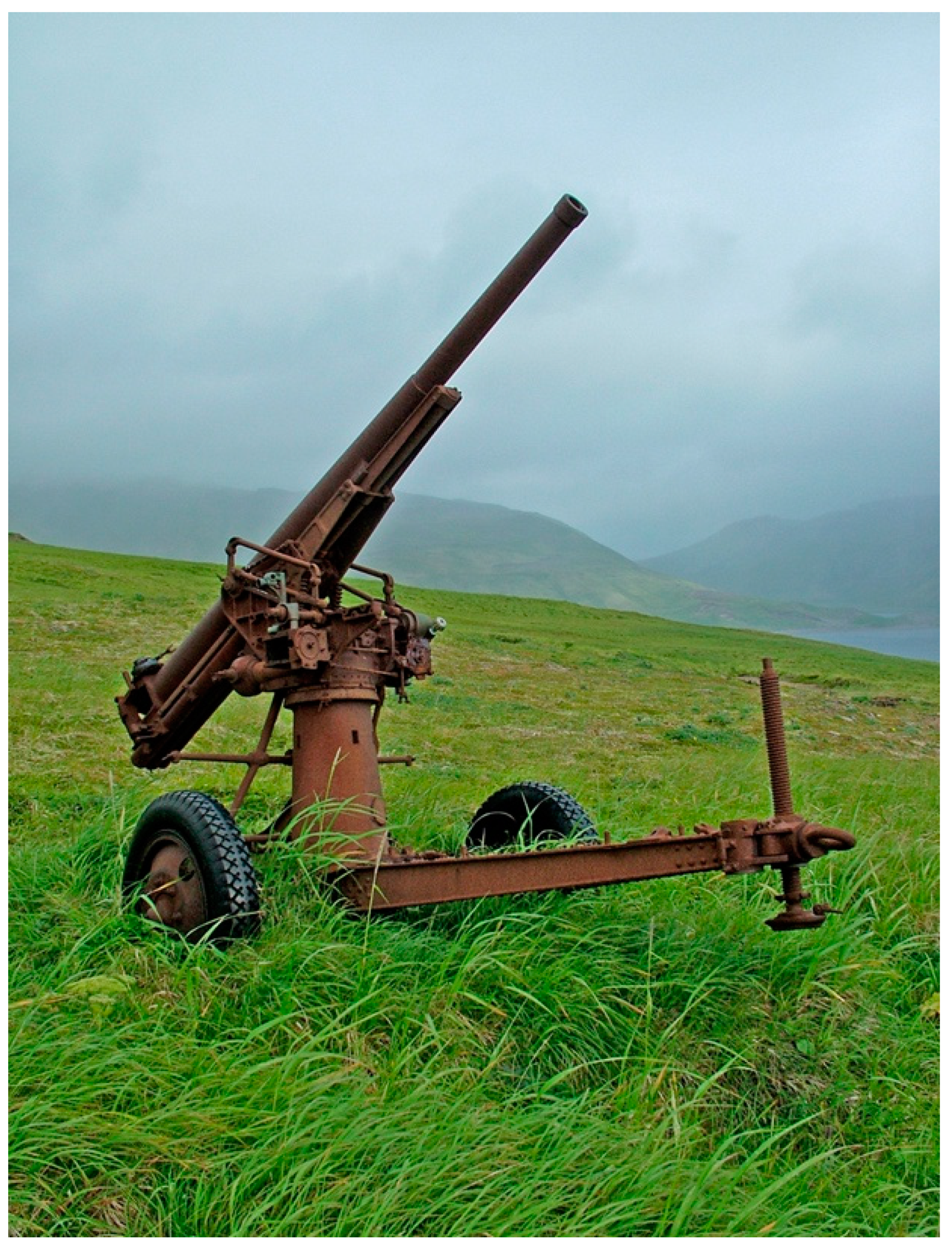

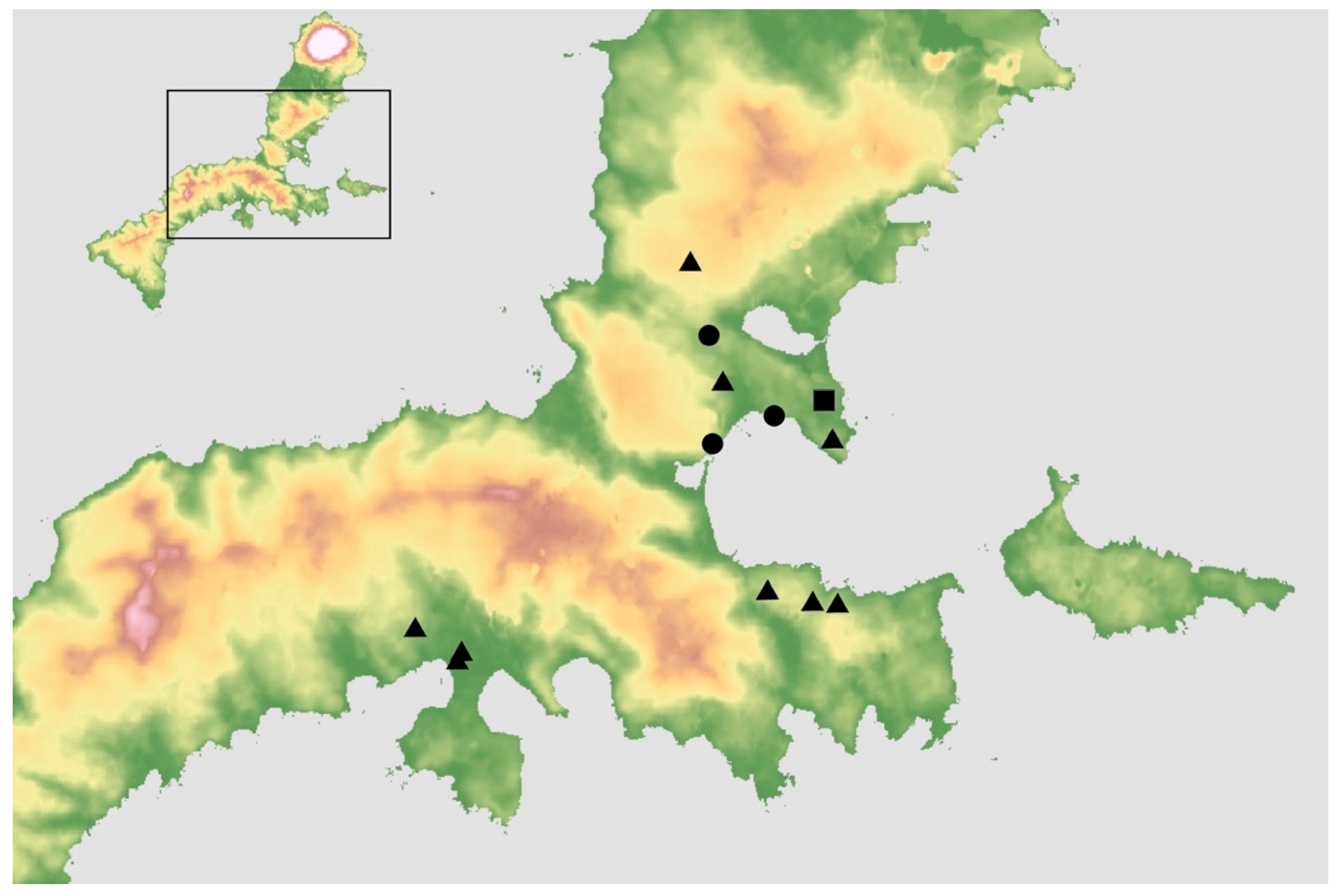
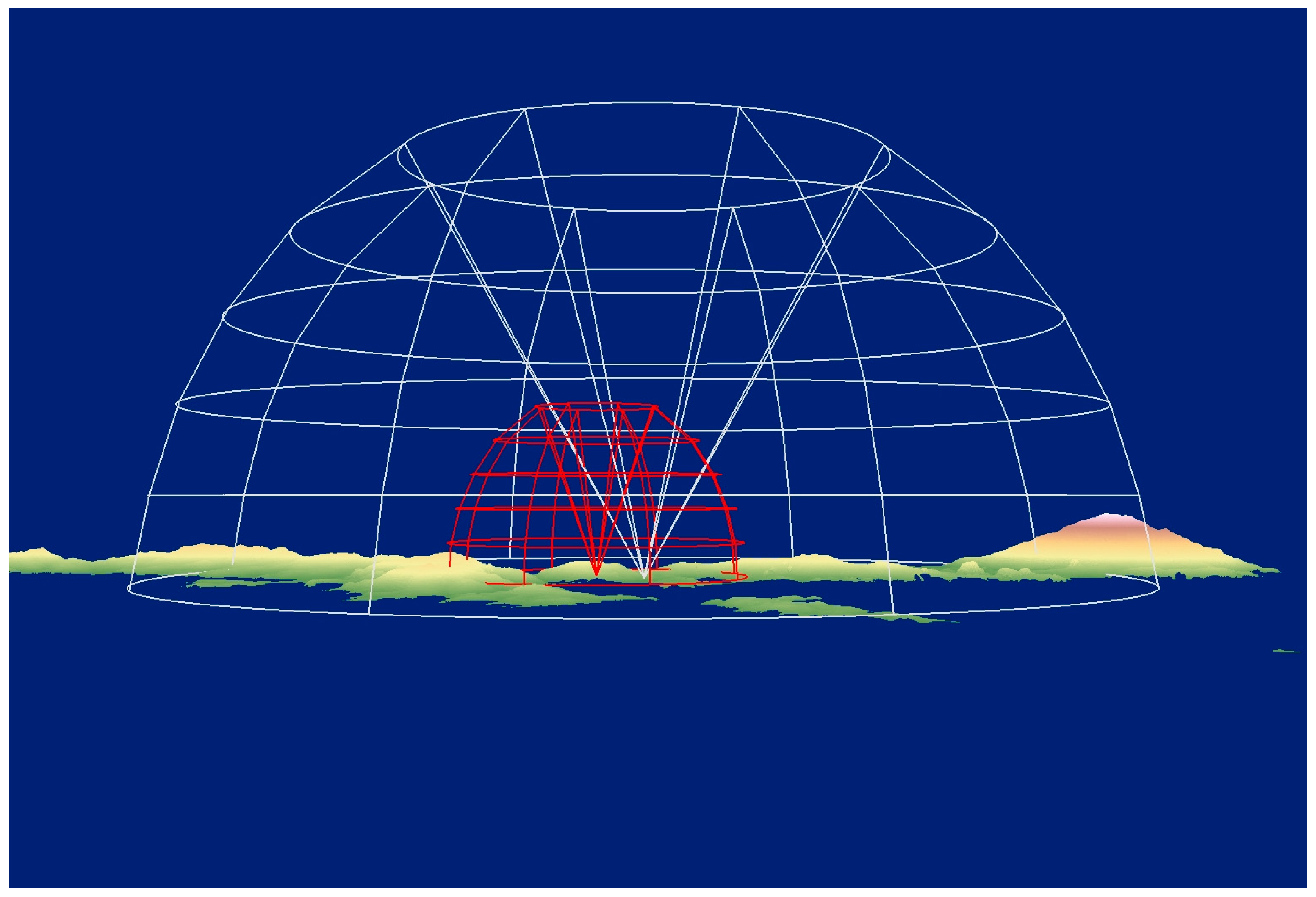
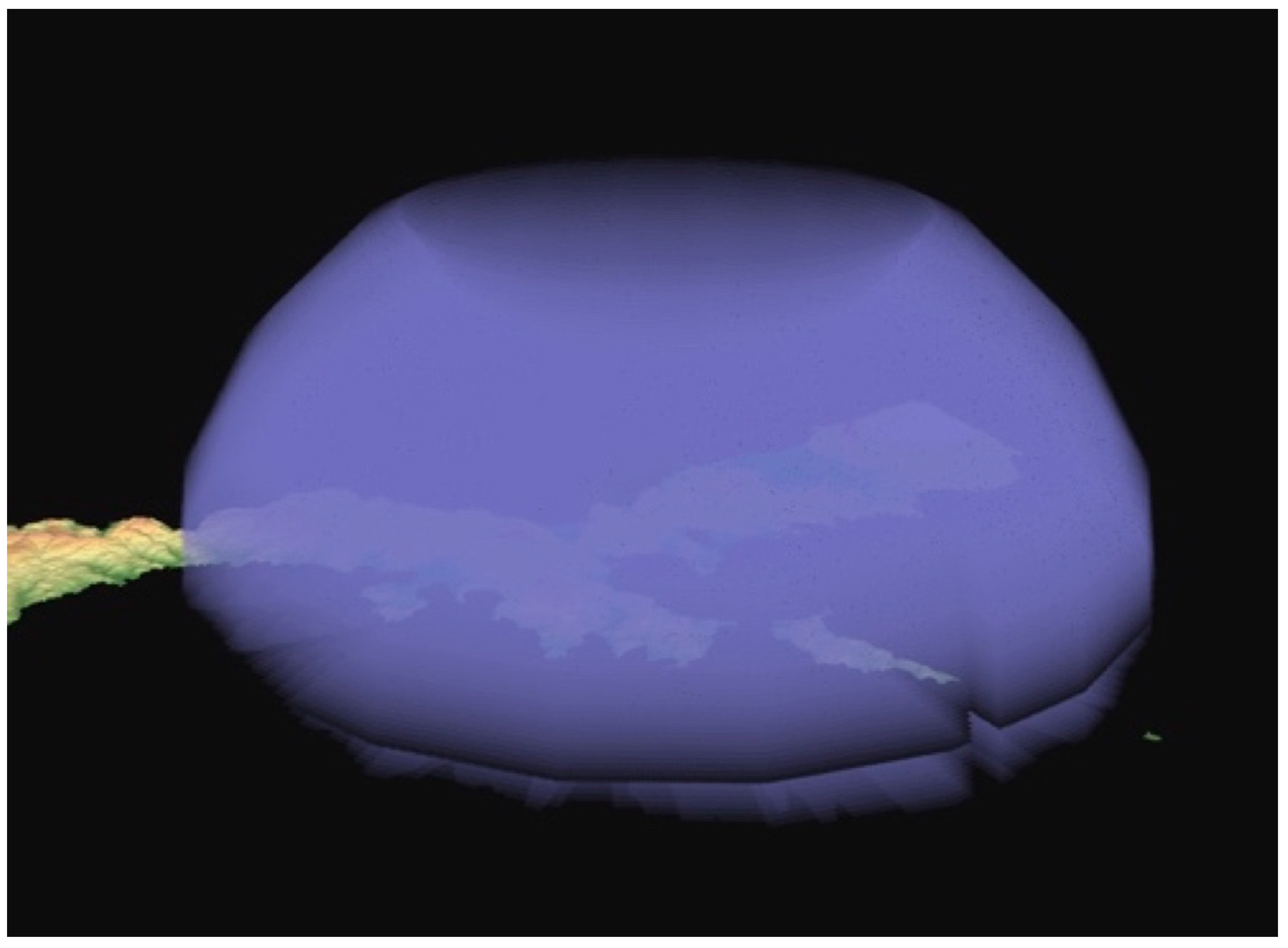
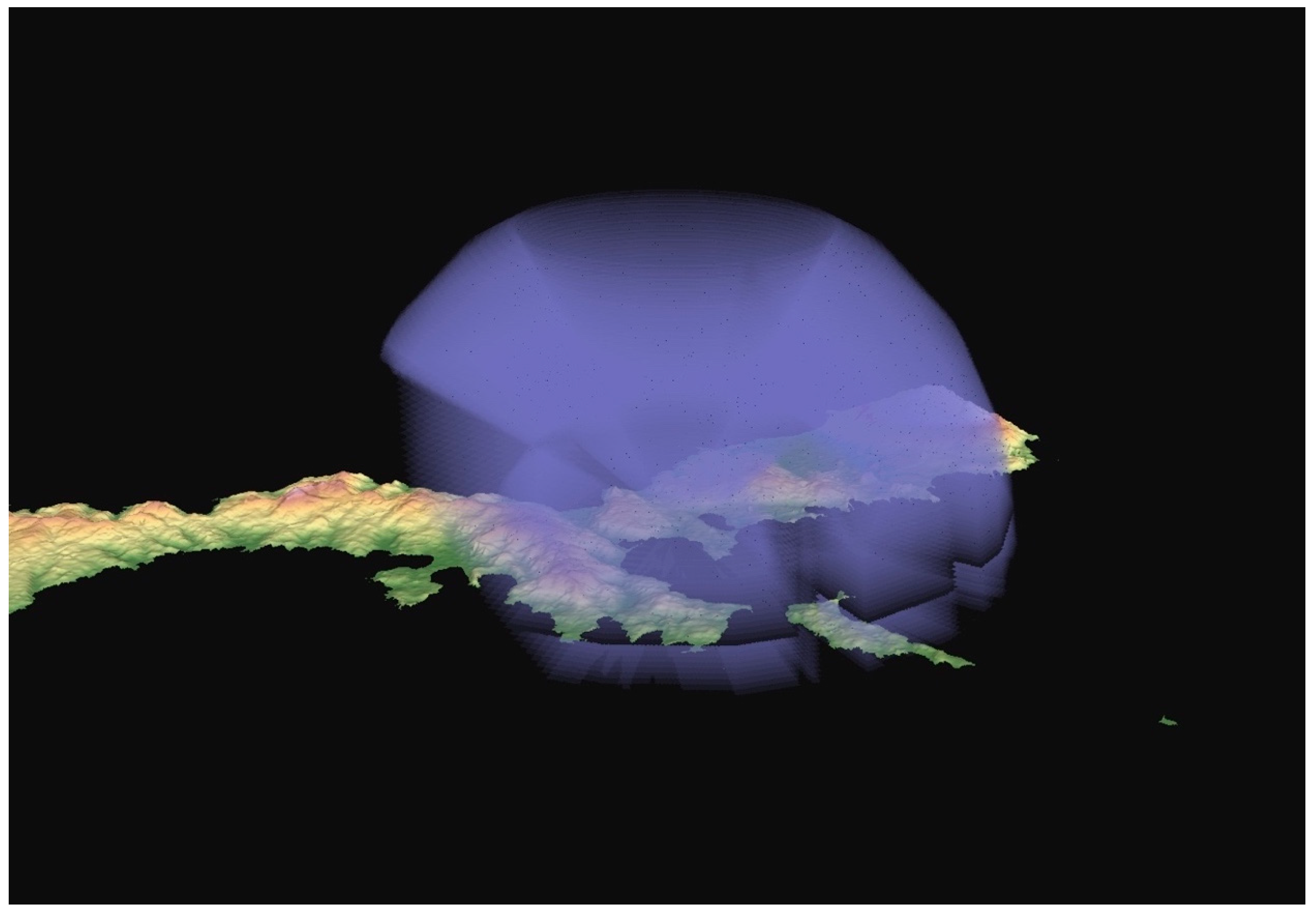


| Battlefield Element | Definition | Examples |
|---|---|---|
| Key Terrain | A portion of the battlefield, possession of which gives an advantage to the possessor. | Road junctions, bridges, high ground. |
| Observation and Fields of Fire | Any point on the landscape that allows observation of the movements, deployments, and activity of the enemy that is not necessarily key terrain, offers opportunity to see over an area and acquire targets, and allows flat-trajectory weapons to be brought to bear on the enemy. | High ground, sloping approaches to entrenched positions. |
| Cover and Concealment | Landforms or landscape elements that provide protection from fire and hide troop positions from observation. | Walls, structures, forests, ravines, riverbanks, entrenchments, ditches. |
| Obstacles | Landscape elements that hinder movement and affect the ultimate course of the battle. | Rivers, walls, dense vegetation, fortifications, ravines, ditches. |
| Avenues of Approach | Corridors used to transfer troops between the core battle area and outer logistical areas. | Roads, paths, creek beds, railroads |
| Phase | Japanese Developments | U.S. Response | Japanese Reaction |
|---|---|---|---|
| Phase I: Preparation phase | War threat developing in SE Asia | Establishment of a weather station on Kiska | Attack Preparations |
| Phase II: Attack Phase | Invasion, development of Naval Installations in Kiska Harbor | Initial long-range bombing from Cold Bay & Umnak medium, later solely high altitude | Installation of initial AA batteries |
| Phase III: Japanese Occupation Period | Japanese extend and strengthen Naval Installations in Kiska Harbor | Systematic long-range high altitude bombing from Umnak | Deployment of Nakajima A6M2-N floatplane fighters (‘Rufe’) Strengthening of heavy AA batteries |
| Japanese establish Army garrison at Gertrude Cove | Systematic long-range high altitude bombing from Adak, some fighter escorts | Strengthening and repositioning of heavy AA batteries | |
| Systematic short-range medium to low altitude bombing from Amchitka, regular fighter escorts | Repositioning of light and medium AA batteries | ||
| Short-range dive bombing from Amchitka | n/a (Japanese had already left) | ||
| Phase IV: Retaking | Japanese evacuate Kiska after Attu was retaken by U.S. forces | U.S. & Canadian forces landing unopposed | |
| Phase V: Garrisoning | U.S. & Canadian forces dig in | ||
| Phase VI: Abandonment | Canadian withdrawal U.S. withdrawal |
| Location | Period | Distance to Kiska |
|---|---|---|
| Cold Bay | 11 Jun 42–??? | 840 m |
| Umnak | 11 Jun–14 Sep 42 | 580 m |
| Adak | 13 Sep 42–after U.S. landings on Kiska | 270 m |
| Amchitka | 18 Feb 43–after U.S. landings on Kiska | 75 m |
| Attu | 22 Jul 43–after U.S. landings on Kiska | 190 m |
| Shemya | 28 Jul 43–after U.S. landings on Kiska | 215 m |
| 127 mm | 76 mm | 25 mm | 13.2 mm | 7.7 mm | |
|---|---|---|---|---|---|
| Ship | Type 89 | 3rd Year | Type 96 | Type 93 | Type 92 |
| CL-4 Tama | 2 × 1 | 2 × 2 | 6 × 1 | 2 × 1 | |
| CL-6 Kiso | 2 × 1 | 2 × 2 | 6 × 1 | 2 × 1 | |
| DD-55 Akatsuki | 3 × 2 | 2 × 2 | |||
| DD-58 Hibiki | 3 × 2 | 2 × 2 | |||
| DD-8 Shiokaze | 2 × 1 | ||||
| DD-12 Hokaze | 2 × 1 | ||||
| AV Kimikawa Maru | 2 × 1 | 2 × 1 | 2 × 2 | 2 × 1 | |
| AC Asaka Maru | 2 × 2 | 1 × 4, 4 × 1 | |||
| AC Awata Maru | 2 × 2 | 1 × 4, 4 × 1 | |||
| AP Kumagawa Maru | 2 × 1 | ||||
| AP Hakusan Maru | 2 × 1 ? | ||||
| AM Hakuhō Maru | 2 × 1 ? | ||||
| AM Kaihō Maru | 2 × 1 ? | ||||
| AMShinkotsu Maru | 2 × 1 ? |
| KOCOA | Japanese | U.S. Aircrew |
|---|---|---|
| Key Terrain/Decisive Terrain | harbour area (incl. ships) western shore of Kiska Harbor | harbour area (incl. ships) western shore of Kiska Harbor |
| Observation and Fields of Fire | Kiska Harbor and nearby shore areas sall of Kiska (when Japanese aircraft were present) | all of Kiska (as attack is airborne) |
| Concealment and Cover | cloud cover only (obscuring the island) underground shelters and caves for personnel (*) | cloud cover only (obscuring the target) |
| Obstacles | nil | terrain limitations (e.g., Kiska Volcano) |
| Avenues of Approach/Withdrawal | n/a | open sea, overland over centre of Kiska |
| Caliber (mm) | Model | Mount | Mobile? | N° | Depression/Elevation | Rate of Fire (Rounds per Min) | Effective Ceiling (Ft) | Maximum Ceiling (Ft) | Weight of Round (Kg) | Types of Ammunition |
|---|---|---|---|---|---|---|---|---|---|---|
| 13.2 | Type 93 | single | yes | 4 | −5°/85° | ~250 | 13,000 | 14,700 | 0.05 | ball, AP, I&T, HE |
| 13.2 | Type 93 | twin | yes | 14 | −5°/85° | ~500 | 13,000 | 14,700 | 0.05 | ball, AP, I&T, HE |
| 20 | Type 98 | single | yes | 15 | −5°/85° | ~120 | 5000 | 11,500 | 0.14 | AP, APT, HE, HET, HETSD, ITSD |
| 25 | Type 96 | twin | no | 10 | −10°/85° | ~220 | 9800 | 18,000 | 0.27 | AP, HE, HET, HETSD, ITSD |
| 75 | Type 88 | single | yes | 22 | 0°/85° | 17–20 | 16,400 | 35,800 | 6.53 | Type 90 AA HE |
| 120 | 10th Year | single | no | 4 | −5°/85° | 6–8 | 22,900 | 33,000 | 20.73 | HE |
© 2020 by the author. Licensee MDPI, Basel, Switzerland. This article is an open access article distributed under the terms and conditions of the Creative Commons Attribution (CC BY) license (http://creativecommons.org/licenses/by/4.0/).
Share and Cite
Spennemann, D.H. Using KOCOA Military Terrain Analysis for the Assessment of Twentieth Century Battlefield Landscapes. Heritage 2020, 3, 753-781. https://doi.org/10.3390/heritage3030042
Spennemann DH. Using KOCOA Military Terrain Analysis for the Assessment of Twentieth Century Battlefield Landscapes. Heritage. 2020; 3(3):753-781. https://doi.org/10.3390/heritage3030042
Chicago/Turabian StyleSpennemann, Dirk HR. 2020. "Using KOCOA Military Terrain Analysis for the Assessment of Twentieth Century Battlefield Landscapes" Heritage 3, no. 3: 753-781. https://doi.org/10.3390/heritage3030042
APA StyleSpennemann, D. H. (2020). Using KOCOA Military Terrain Analysis for the Assessment of Twentieth Century Battlefield Landscapes. Heritage, 3(3), 753-781. https://doi.org/10.3390/heritage3030042





